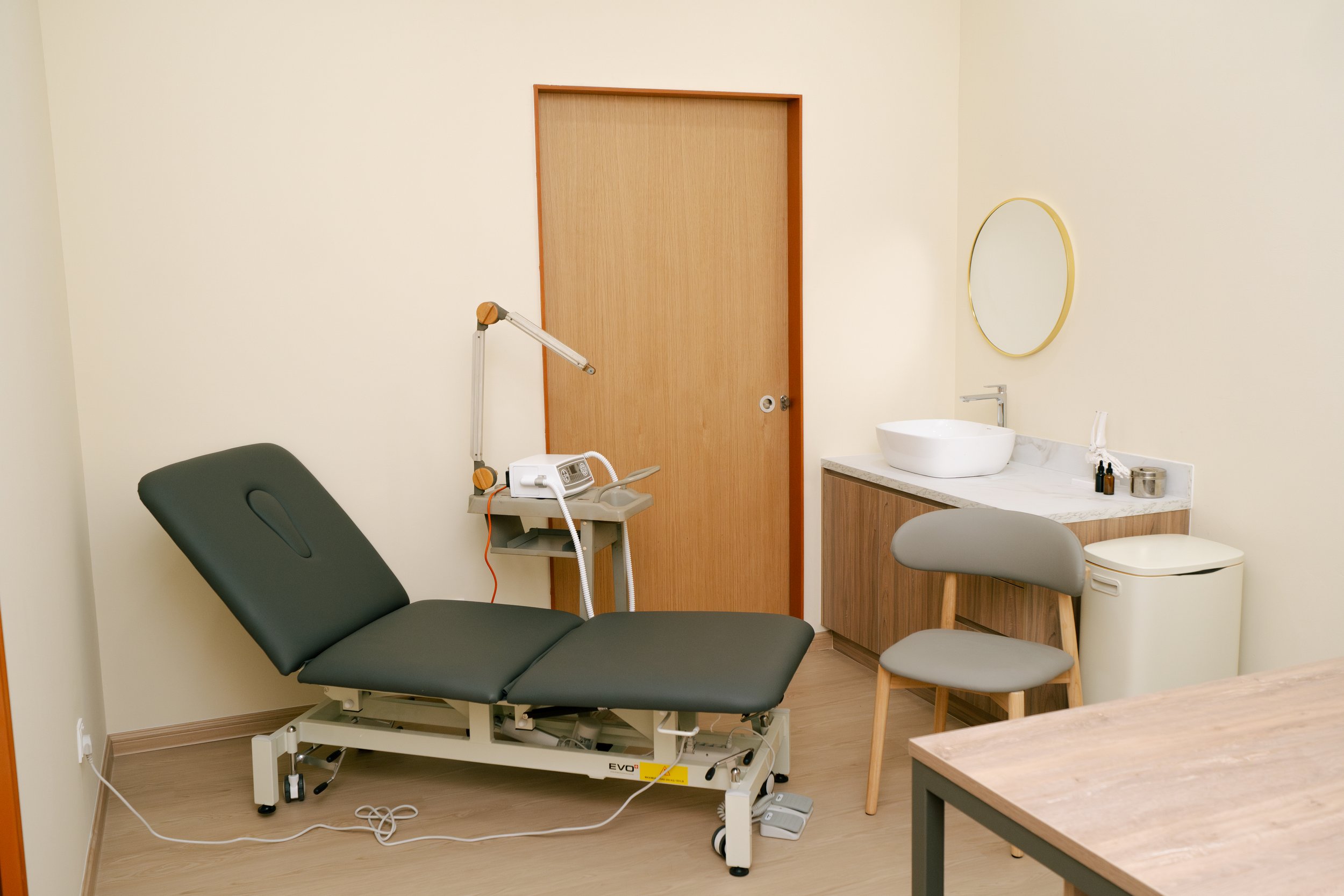
Stress Fracture
What Is a Stress Fracture?
A stress fracture is a small crack or microfracture in a bone caused by repetitive stress and overuse—not a single traumatic event. Unlike acute fractures that occur instantly from a fall or impact, stress fractures develop gradually over time, particularly in the weight-bearing bones of the feet and lower legs.
These injuries are especially common in athletes, runners, dancers, or individuals who regularly engage in high-impact sports such as basketball, tennis, and football. But even a sudden increase in your walking or exercise routine—without appropriate footwear or rest—can lead to this condition.
Common Sites of Stress Fractures
While stress fractures can occur in various bones of the foot, the most frequently affected areas include:
Common Locations:
2nd and 3rd Metatarsals (long bones in the forefoot)
Sesamoid bones (beneath the big toe joint)
High-Risk/Complex Locations:
Navicular bone (top of the midfoot arch)
5th Metatarsal (base/shaft) (outer edge of the foot)
Calcaneus (heel bone)
Fractures in these high-risk areas may have delayed or incomplete healing, requiring closer monitoring and more involved treatment.
Causes of Stress Fractures
Stress fractures are caused when bones are repeatedly subjected to forces they aren’t given time to recover from. Common causes include:
Overuse from running, jumping, or dancing
Training on hard or uneven surfaces
Rapid increase in training intensity or duration
Poor footwear that lacks shock absorption or support
Foot or ankle biomechanical imbalances
Muscle fatigue, which transfers more force to bones
Nutritional deficiencies (low calcium or vitamin D)
Osteoporosis or medications affecting bone density
Symptoms of a Stress Fracture
The symptoms of a stress fracture usually start off subtly and worsen over time. Be aware of the following warning signs:
Localised pain and tenderness, especially with weight-bearing
Pain that worsens with activity but eases at rest
Swelling or bruising around the painful area
Pain that increases at night or after exercise
Inability to run, walk, or bear weight comfortably
Pain that initially feels like a “dull ache” but becomes sharper
Ignoring these symptoms can allow a minor injury to develop into a complete fracture.
How Is a Stress Fracture Diagnosed?
At KL Foot Specialist Podiatry, your podiatrist will begin with a comprehensive examination that includes:
Reviewing your medical history and activity patterns
A physical assessment of tenderness, swelling, and mobility
Gait analysis to assess biomechanical stress factors
If a stress fracture is suspected, we may refer you for:
X-rays (though stress fractures may not show early on)
MRI or bone scan for a more accurate diagnosis and to assess severity
Treatment for Stress Fractures
Early diagnosis and intervention are critical for faster recovery. Your treatment plan may include:
RICE Protocol
Rest, Ice, Compression and Elevation to reduce pain and swelling.
Training Modification
We’ll advise you on how to reduce or pause high-impact activities and suggest low-impact alternatives like swimming or cycling during recovery.
Supportive Footwear
Wearing shock-absorbing shoes helps to protect and cushion the healing bone.
Custom Foot Orthotics
Orthotics are often recommended to correct biomechanical issues, offload pressure from the fracture site, and prevent future injuries.
Moon Boot or Walking Boot
For moderate to severe stress fractures or those in high-risk locations, immobilisation in a medical boot may be needed to protect the area and promote healing.
Pain & Inflammation Management
Non-steroidal anti-inflammatory medications (NSAIDs) may be recommended if appropriate.
Rehabilitation
After the bone has healed, we’ll guide you through a strengthening and mobility program to restore function, prevent recurrence, and prepare you for a safe return to activity.
Preventing Complications & Supporting Joint Health
While you can’t fully prevent RA, you can manage its impact. To support joint health:
Stop smoking and avoid second-hand smoke
Maintain a healthy weight
Wear supportive footwear daily
Perform regular low-impact exercises (e.g. swimming, walking)
Manage flares early with your care team
Eat an anti-inflammatory diet (rich in omega-3s, whole foods)
Stay consistent with medications and rheumatology care
Avoid prolonged joint strain or standing
Prevention Tips
You can reduce your risk of developing a stress fracture by:
Wearing well-cushioned, supportive shoes
Gradually increasing your training load and intensity
Ensuring proper gait biomechanics with a podiatrist
Avoiding overtraining or repetitive activity without adequate rest
Cross-training with low-impact exercises to reduce repetitive stress
Eating a calcium- and vitamin D-rich diet to maintain bone health
Replacing worn-out athletic shoes regularly
When to See a Podiatrist
If you’ve been experiencing persistent foot pain that worsens with activity and improves with rest, don’t delay. Our experienced podiatrists can assess your symptoms, provide accurate diagnosis and help you return to your favourite activities safely.
Get Back on Your Feet, Pain-Free
At KL Foot Specialist Podiatry, we combine the latest technologies with personalised care plans to deliver the best outcomes for stress fractures and sports injuries. Book an appointment today and take the first step toward recovery.
